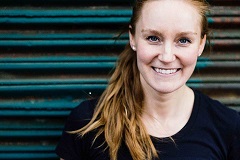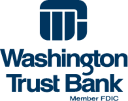Stretching & Shoes
This information courtesy of Providence Health Care, Bloomsday's Official Training Sponsor

Stretching
- Stretching is a vital component of your training plan and overall health and fitness. Muscles should be flexible around all sides of our joints for proper range of motion and joint alignment. If our muscles are tighter on one side of the joint, this imbalance can increase the risk of injury.
- Muscles stretch best when they are warm, so it is not recommended to hold static stretches prior to exercise. Perform a dynamic warmup to ease yourself into exercise or begin at a slow pace for the first 3 to 5 minutes. A dynamic warmup would be sport- or activity-specific movements (e.g. arm circles, marching with high knees, straight legs kicks) to prepare your muscles, tendons, and joints for exercise. Your heart rate and breathing should increase as your body sends blood to the working muscles.
- The cooldown period of your walk or run is also important. Continue your activity for an additional 3-5 minutes at a slower pace. This will gradually bring your heart rate and blood pressure down and encourage the replenishment of blood and oxygen to your working muscles. Try to avoid sitting down immediately after you exercise because as you cool down, your muscles act as a second pump, along with your heart, to replenish this blood and oxygen. This helps take some of the workload off of your heart.
- Generally, you should aim to stretch all your major muscle groups after you exercise. Runners and walkers should especially focus on the calves, quadriceps, hamstrings, hip flexors, and iliotibial bands (also known as the IT Band).
- Stretching should feel like a gentle “pull” on the muscle and should not be painful. Try to relax into your stretches and take regular breaths.
- Aim to hold each stretch for at least 30 seconds.
- Here is a guide for basic stretches provided by the Mayo Clinic.
- If you have health concerns or injuries, talk to your health care provider or a physical therapist before you start your stretching or training routine.
- Proper running and walking shoes are very important in avoiding injury. It is beneficial to consult with the staff from a reputable running shoe store so they can individualize the best footwear for you. Locally in Spokane, you could consider shoe stores such as Fleet Feet and Runners Soul. Sports medicine doctors, podiatrists, physical therapists, or chiropractors can also be good resources. They will be able to analyze your walking or running style to see how your foot and ankle land, also called your foot strike. Proper shoes are an important investment in your training!
- There are many options ranging from shoes offering more padding or cushion to a more minimalist shoe with less cushion. In the end, the shoe should have a very comfortable fit!
- Our feet come in many shapes and sizes. Our shoes should conform to the shape of our feet. Consider the width and length of your foot to find the proper fitting shoe and prevent blisters.
- Consider the arch of your foot. Generally, this could be a neutral arch, low arch (flat foot), or high arch. Our arch-type and average daily mileage can help us select the amount of cushion we will need in a shoe. To determine your arch, wet the bottom of your foot, and step on a piece of cardboard. If you can see most of your footprint, you probably have low arches. If you can see very little, you probably have high arches. With low arches, our feet are prone to overpronation, an inward rolling motion. With a low arch, consider a higher stability shoe to prevent overpronation. Neutral arches would be the most biomechanically sound type of arch. With a neutral arch, many types of shoes could fit comfortably, so consider a moderate stability shoe. With high arches, our feet are prone to supination, which means landing on the outside edge of the foot. With a high arch, consider a cushioned shoe, providing midsole padding.
- If you are considering a more minimalist or barefoot shoe, keep in mind that this minimal amount of cushioning may not be for everyone. If you want to try a minimalist shoe for your training, make the transition gradually by starting with a shoe that has less cushion than your current shoes but more cushion than a minimalist shoe. This allows our bones, muscles, tendons, and ligaments time to adjust and strengthen. Listen to your body. If your joints are hurting after your training walks or runs, consider a more cushioned shoe.
- Walking and running shoes differ slightly. Running shoes generally have more cushion for the higher impact that running has versus walking, so consider buying a shoe specific for whether you plan on walking or running during your event or training.
- Your toe should not touch the end of the shoe because our feet can swell with activity, causing pressure and discomfort. Allow about ½ inch from the longest toe to the tip of your shoe.
- Once you find a shoe that fits you well where you have successfully trained in them injury-free, watch for deals for this same shoe to purchase your next pair! If it is discontinued, consider returning to the experts at the running shoe store to be re-evaluated.
- Consider that running shoes may need to be retired from training after about 300-500 miles to prevent injury.
This information courtesy of Laura Wambold, MS, RCEP, Clinical Exercise Physiologist
St. Luke’s Outpatient Cardiopulmonary Rehabilitation Program

Striving to live a healthy and fit lifestyle and helping others reach their own personal health goals is a passion of Laura's. In her downtime from St. Luke's, she works at an all-women's gym in Spokane. She ran the Seattle Marathon in 2010 but prefers the distance of the Bloomsday course. In the past, she enjoyed running Bloomsday and now has fun walking it with her husband, Jase, and two daughters, Avery and Andi, in the stroller group!




















